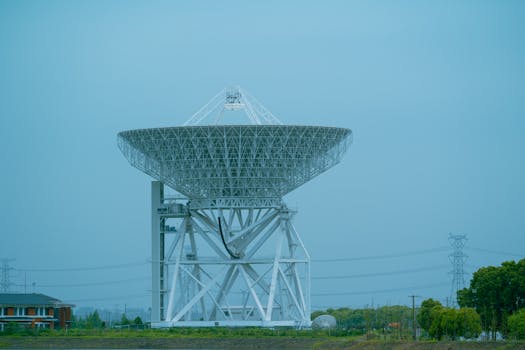Satellite Telecommunications 2023: What’s New and What’s Next in Satellite Telecommunications

Satellite Telecommunications 2023: What’s New and What’s Next in Satellite Telecommunications
Satellite Telecommunications is a rapidly growing field that has revolutionized the way we communicate and access information. With the increasing demand for global connectivity, the satellite telecommunications industry is expected to continue its upward trajectory in 2023. In this article, we will explore the latest developments and future trends in satellite telecommunications, including the impact of emerging technologies such as 5G, the Internet of Things (IoT), and artificial intelligence (AI).
The satellite telecommunications industry has witnessed significant advancements in recent years, with the launch of new satellite constellations, improvements in satellite technology, and the adoption of innovative business models. One of the most notable developments is the growth of Low Earth Orbit (LEO) satellites, which offer faster and more affordable internet connectivity compared to traditional Geostationary Orbit (GEO) satellites. Companies such as SpaceX, Amazon, and OneWeb are leading the charge in the development of LEO satellite constellations, with plans to launch thousands of satellites in the coming years.
The Rise of LEO Satellites
LEO satellites are becoming increasingly popular due to their ability to provide high-speed, low-latency internet connectivity. These satellites operate at an altitude of around 1,200 kilometers, which is much lower than the 36,000 kilometers of traditional GEO satellites. This lower altitude enables LEO satellites to offer faster data transfer rates and lower latency, making them ideal for real-time applications such as video streaming, online gaming, and virtual reality. Additionally, LEO satellites are less expensive to launch and operate compared to GEO satellites, which has made them an attractive option for companies looking to provide global internet connectivity.
Another significant development in the satellite telecommunications industry is the adoption of phased array technology. Phased array antennas are capable of electronically steering beams, allowing them to track multiple satellites and provide continuous connectivity. This technology has improved the efficiency and reliability of satellite communications, enabling the use of smaller, more compact antennas. Phased array technology is expected to play a critical role in the development of next-generation satellite systems, including 5G and IoT applications.
5G and the Internet of Things (IoT)
The integration of 5G and IoT technologies is expected to have a significant impact on the satellite telecommunications industry. 5G networks will require a large number of small cells, which can be connected using satellite backhaul. This will enable the provision of high-speed, low-latency connectivity in areas where fiber-optic cables are not available. Additionally, the use of satellite-based IoT applications will enable the monitoring and control of remote devices, such as sensors and drones, in real-time.
The adoption of AI and machine learning (ML) technologies is also expected to transform the satellite telecommunications industry. AI and ML can be used to optimize satellite operations, predict maintenance requirements, and improve the overall efficiency of satellite systems. Additionally, AI-powered analytics can be used to analyze large amounts of data generated by satellite-based IoT applications, enabling the extraction of valuable insights and trends.
Future Trends and Challenges
Despite the many advancements in the satellite telecommunications industry, there are still several challenges that need to be addressed. One of the major concerns is the issue of space debris, which can pose a significant risk to operational satellites. The growth of LEO satellite constellations has increased the risk of collisions, highlighting the need for more effective debris mitigation and removal strategies.
Another challenge facing the satellite telecommunications industry is the need for more efficient and sustainable propulsion systems. Traditional chemical propulsion systems are not only expensive but also contribute to space debris. The development of more efficient and sustainable propulsion systems, such as electric propulsion, is critical to the long-term sustainability of the satellite telecommunications industry.
In conclusion, the satellite telecommunications industry is rapidly evolving, with new technologies and innovations emerging in 2023. The growth of LEO satellites, the adoption of phased array technology, and the integration of 5G and IoT technologies are expected to have a significant impact on the industry. However, there are still several challenges that need to be addressed, including the issue of space debris and the need for more efficient and sustainable propulsion systems.





